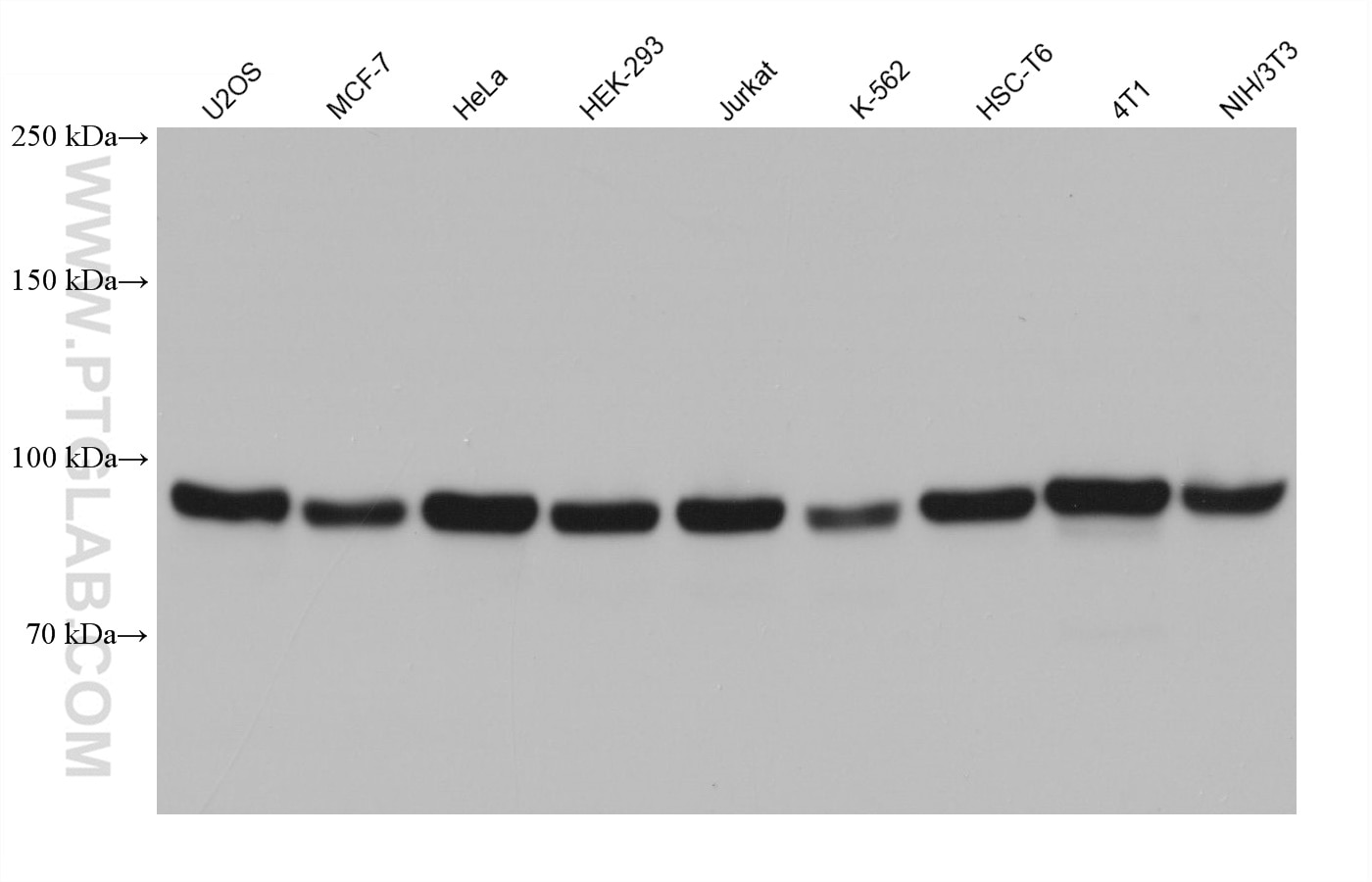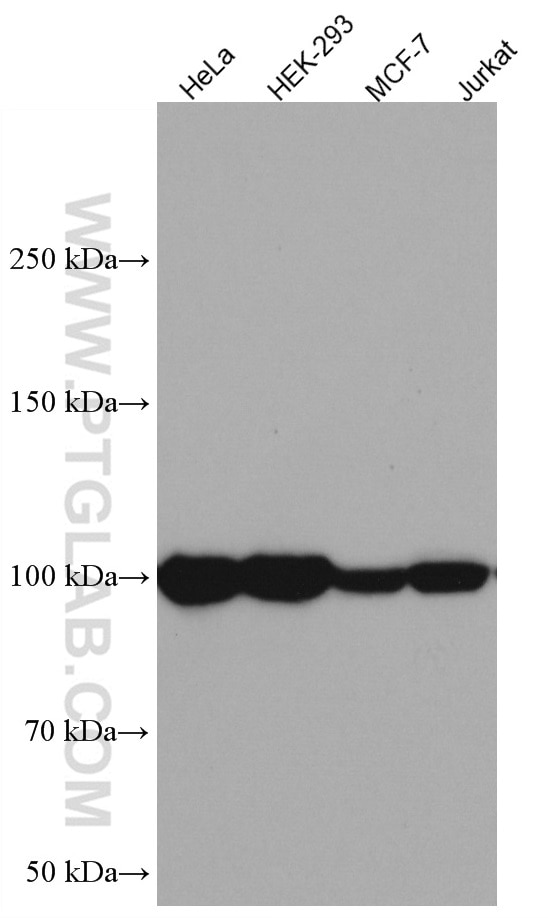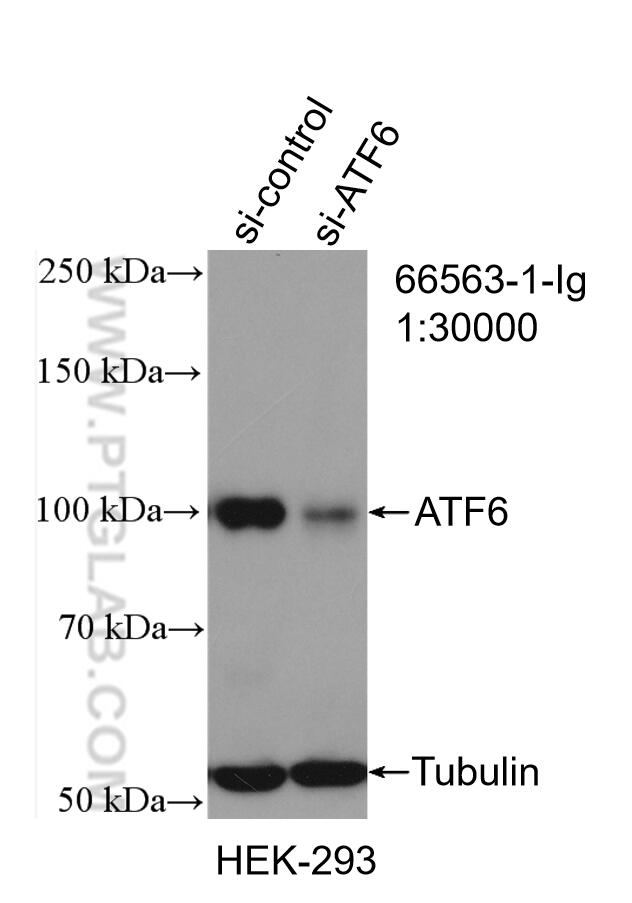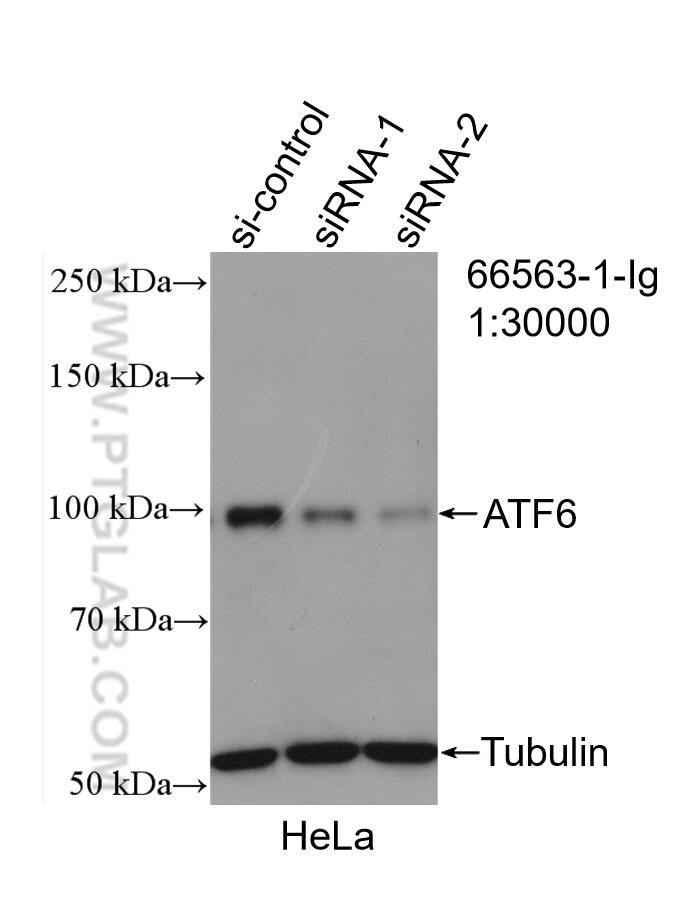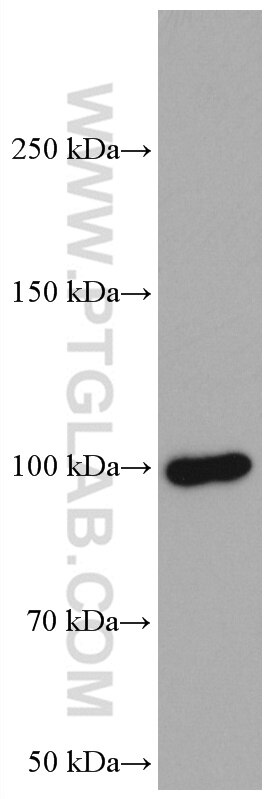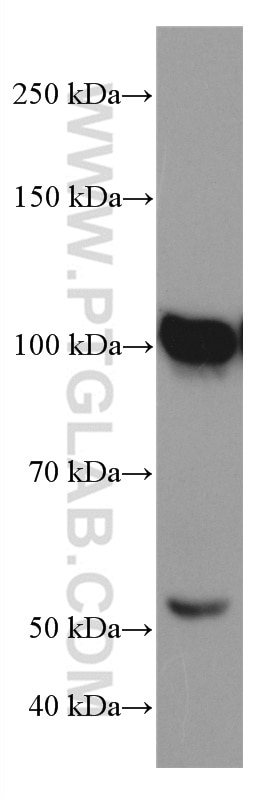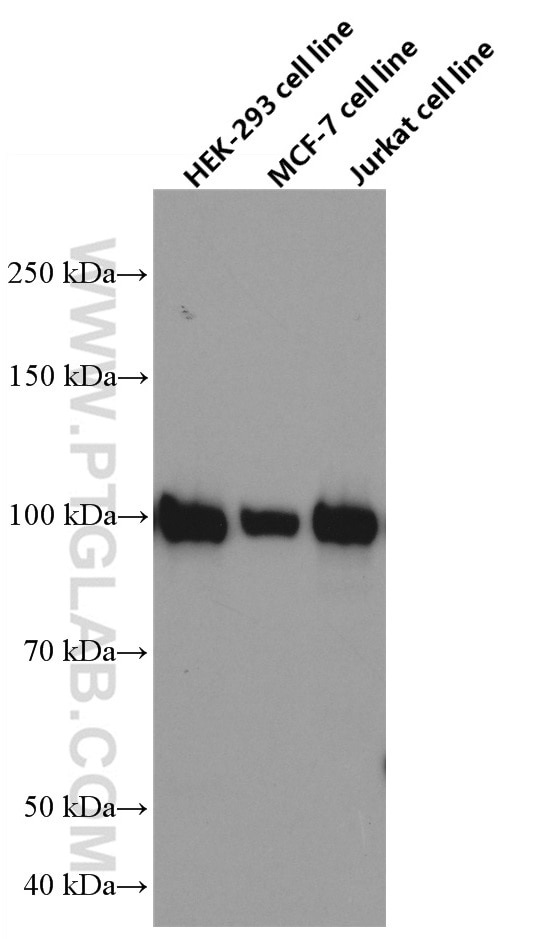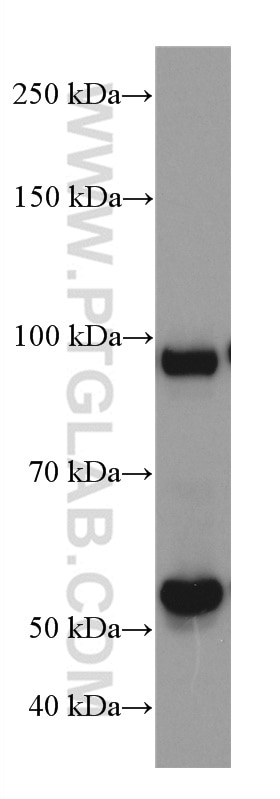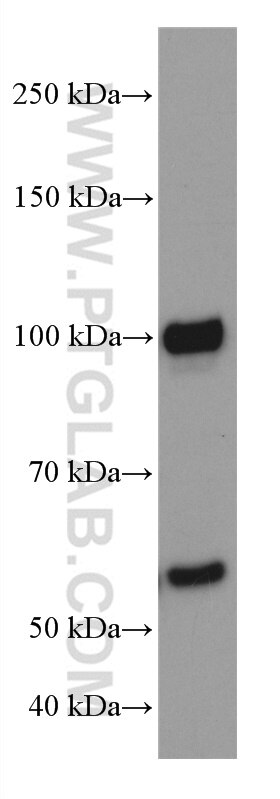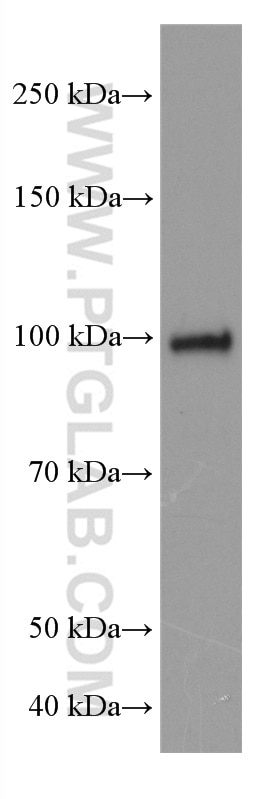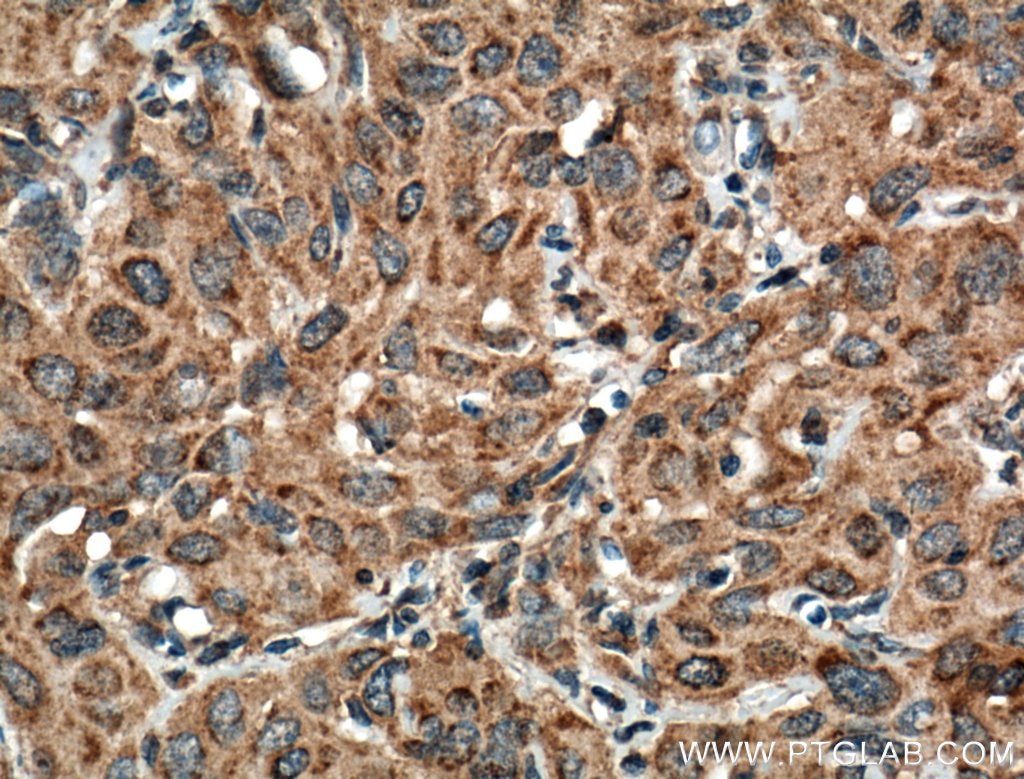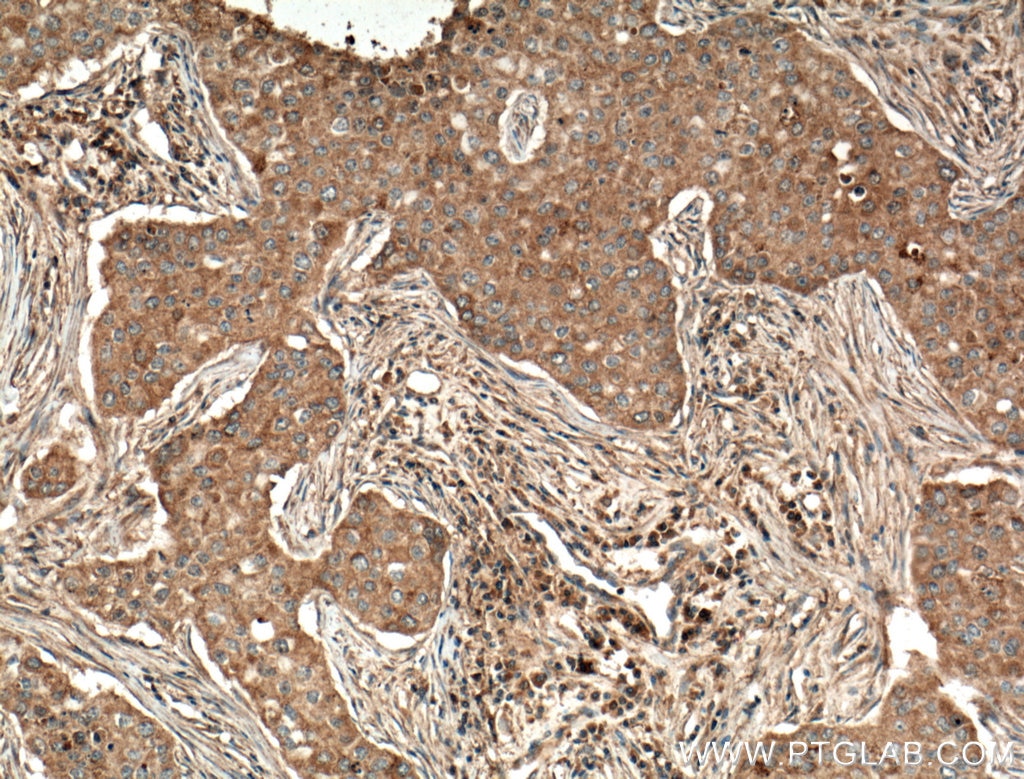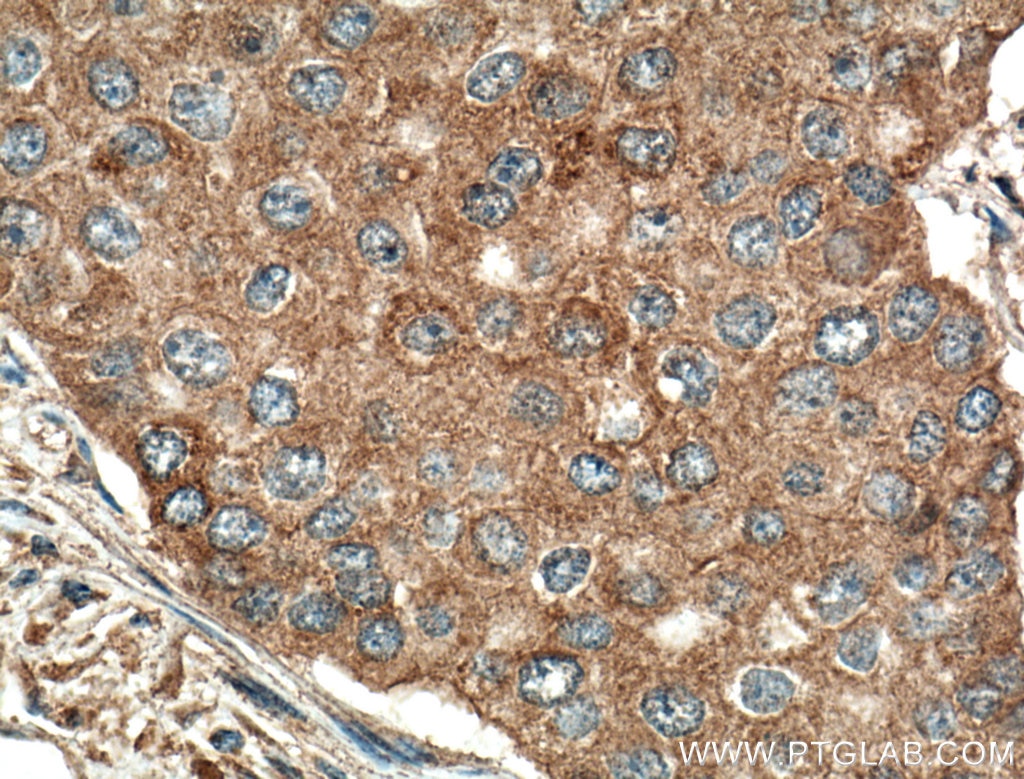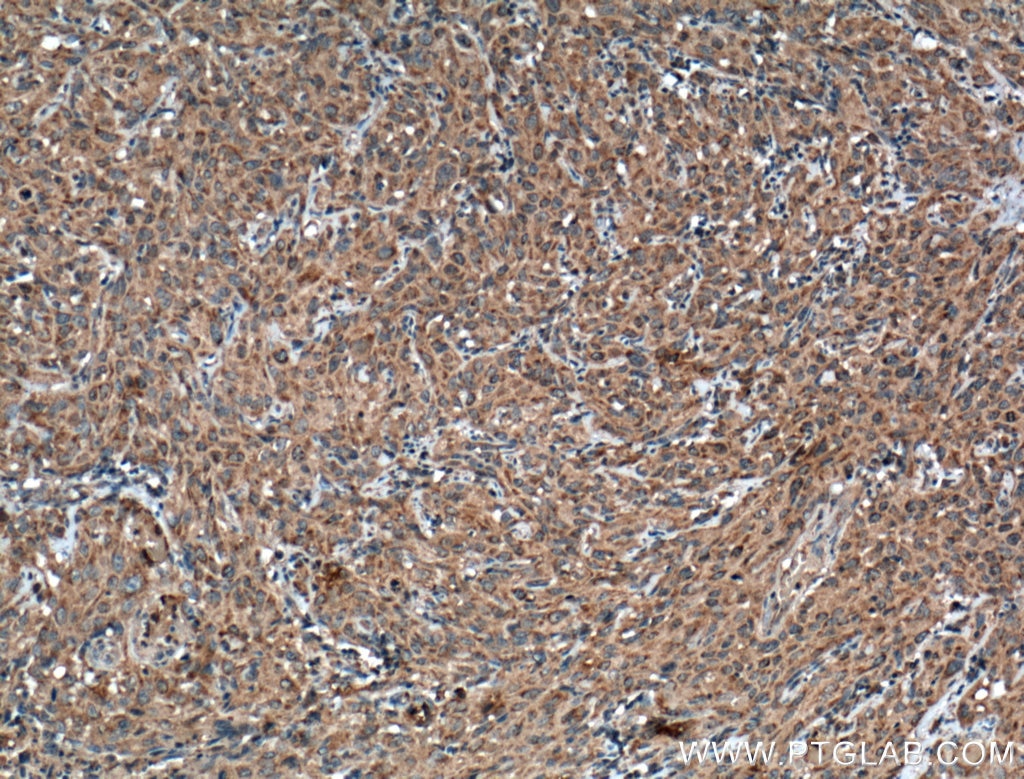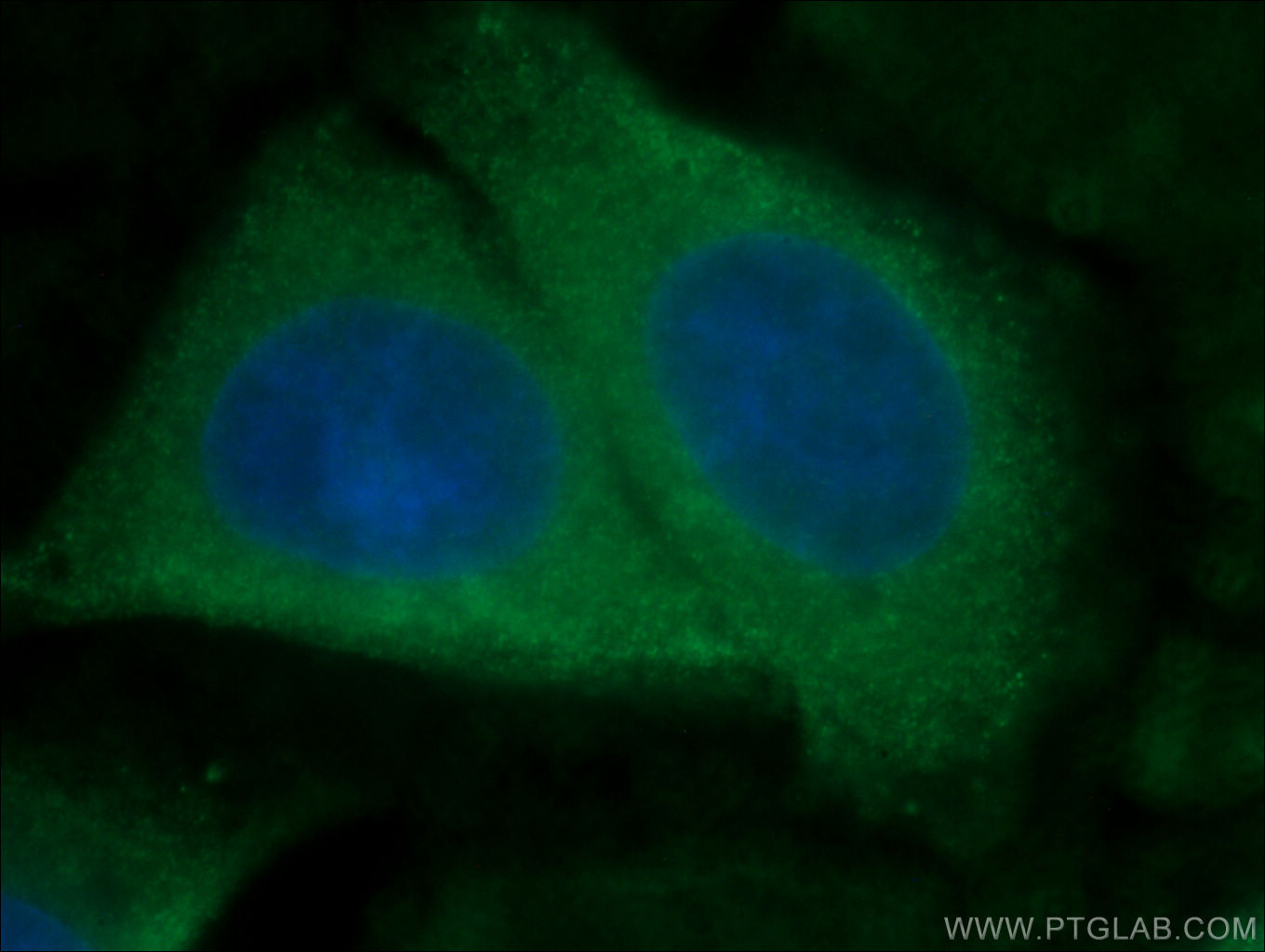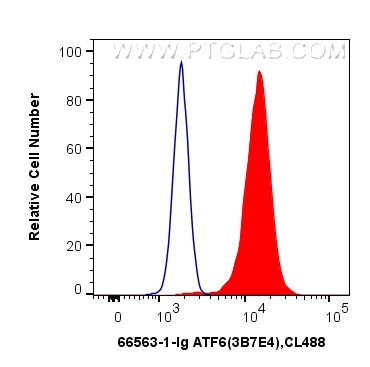- Phare
- Validé par KD/KO
Anticorps Monoclonal anti-ATF6
ATF6 Monoclonal Antibody for FC, IF, IHC, WB, ELISA
Hôte / Isotype
Mouse / IgG1
Réactivité testée
Humain, rat, souris et plus (1)
Applications
WB, IHC, IF, FC, ELISA
Conjugaison
Non conjugué
CloneNo.
3B7E4
N° de cat : 66563-1-Ig
Synonymes
Galerie de données de validation
Applications testées
| Résultats positifs en WB | cellules U2OS, cellules 4T1, cellules HEK-293, cellules HeLa, cellules HSC-T6, cellules Jurkat, cellules K-562, cellules MCF-7, cellules NIH/3T3, cellules RAW 264.7 |
| Résultats positifs en IHC | tissu de cancer du col de l'utérus humain, tissu de cancer du sein humain il est suggéré de démasquer l'antigène avec un tampon de TE buffer pH 9.0; (*) À défaut, 'le démasquage de l'antigène peut être 'effectué avec un tampon citrate pH 6,0. |
| Résultats positifs en IF | cellules HepG2, |
| Résultats positifs en cytométrie | cellules HeLa, |
Dilution recommandée
| Application | Dilution |
|---|---|
| Western Blot (WB) | WB : 1:5000-1:50000 |
| Immunohistochimie (IHC) | IHC : 1:250-1:1000 |
| Immunofluorescence (IF) | IF : 1:50-1:500 |
| Flow Cytometry (FC) | FC : 0.40 ug per 10^6 cells in a 100 µl suspension |
| It is recommended that this reagent should be titrated in each testing system to obtain optimal results. | |
| Sample-dependent, check data in validation data gallery | |
Applications publiées
| KD/KO | See 1 publications below |
| WB | See 20 publications below |
| IF | See 2 publications below |
Informations sur le produit
66563-1-Ig cible ATF6 dans les applications de WB, IHC, IF, FC, ELISA et montre une réactivité avec des échantillons Humain, rat, souris
| Réactivité | Humain, rat, souris |
| Réactivité citée | rat, Humain, porc, souris |
| Hôte / Isotype | Mouse / IgG1 |
| Clonalité | Monoclonal |
| Type | Anticorps |
| Immunogène | ATF6 Protéine recombinante Ag21456 |
| Nom complet | activating transcription factor 6 |
| Masse moléculaire calculée | 75 kDa |
| Poids moléculaire observé | 90-100 kDa |
| Numéro d’acquisition GenBank | BC014969 |
| Symbole du gène | ATF6 |
| Identification du gène (NCBI) | 22926 |
| Conjugaison | Non conjugué |
| Forme | Liquide |
| Méthode de purification | Purification par protéine A |
| Tampon de stockage | PBS avec azoture de sodium à 0,02 % et glycérol à 50 % pH 7,3 |
| Conditions de stockage | Stocker à -20°C. Stable pendant un an après l'expédition. L'aliquotage n'est pas nécessaire pour le stockage à -20oC Les 20ul contiennent 0,1% de BSA. |
Informations générales
Activating transcription factor 6 (ATF6) is a transcription factor that acts during endoplasmic reticulum stress by activating unfolded protein response target genes. Binds DNA on the 5'-CCAC[GA]-3'half of the ER stress response element (ERSE) (5'-CCAAT-N(9)-CCAC[GA]-3') and of ERSE II (5'-ATTGG-N-CCACG-3'). Binding to ERSE requires binding of NF-Y to ERSE. Could also be involved in activation of transcription by the serum response factor.During unfolded protein response an approximative 50 kDa fragment containing the cytoplasmic transcription factor domain is released by proteolysis. The cleavage seems to be performed sequentially by site-1 and site-2 proteases. The fully glycosylated form of ATF6, a 670 amino acid protein, exhibits an electrophoretic mobility of ~90 kDa in denaturing SDS-gels, in part because of the glycosylated modifications. ATF6 has 3 consensus sites for N-linked glycosylation and exists constitutively as a glycosylated protein. Differentially glycosylated ATF6 forms may result from mutations or experimental treatment (PMID:15804611) (PMID:14699159). The antibody recognizes cleaved and fully glycosylated forms of ATF6.
Protocole
| Product Specific Protocols | |
|---|---|
| WB protocol for ATF6 antibody 66563-1-Ig | Download protocol |
| IHC protocol for ATF6 antibody 66563-1-Ig | Download protocol |
| IF protocol for ATF6 antibody 66563-1-Ig | Download protocol |
| Standard Protocols | |
|---|---|
| Click here to view our Standard Protocols |
Publications
| Species | Application | Title |
|---|---|---|
Protein Cell POST1/C12ORF49 regulates the SREBP pathway by promoting site-1 protease maturation. | ||
J Cell Biol Antigen-derived peptides engage the ER stress sensor IRE1α to curb dendritic cell cross-presentation. | ||
Cell Rep CD44 correlates with longevity and enhances basal ATF6 activity and ER stress resistance | ||
Elife Endoplasmic reticulum stress activates human IRE1α through reversible assembly of inactive dimers into small oligomers. | ||
Mol Oncol The synthetic oleanane triterpenoid CDDO-2P-Im binds GRP78/BiP to induce unfolded protein response-mediated apoptosis in myeloma | ||
J Inflamm (Lond) Soluble epoxide hydrolase deficiency attenuates airway inflammation in COPD via IRE1α/JNK/AP-1 signaling pathway |
